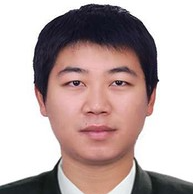High-Performance and Sustainable Supercapacitors: Current Status and Perspective
A special issue of Batteries (ISSN 2313-0105). This special issue belongs to the section "Battery Modelling, Simulation, Management and Application".
Deadline for manuscript submissions: closed (20 March 2023) | Viewed by 14441

Special Issue Editors
Interests: zinc-ion hybrid supercapacitors and zinc-ion batteries; carbon nanomaterials; flexible energy storage systems
Special Issue Information
Dear Colleagues,
Supercapacitors, also known as electrochemical capacitors, are highly efficient energy storage devices that possess high power and long cycle life. From electric double-layer capacitors to pseudocapacitors, asymmetric supercapacitors, metal–ion hybrid supercapacitors and new-concept configurations (such as flexible supercapacitors and micro-supercapacitors), supercapacitors have seen unprecedented innovations over the last few decades. Currently, the major components of supercapacitors, i.e., electrode materials and electrolytes, cell configuration, as well as the underpinning mechanisms for different subtypes, are under intensive progress and development. With the recent prevailing of the concept of carbon neutrality, the advancement of supercapacitors is at the forefront of a new era.
In this Special Issue, we are seeking contributions that further extend the research field of supercapacitors. Topics of interest include, but are not limited to:
- Materials and electrodes for supercapacitors.
- Electrolyte engineering for supercapacitors.
- Energy storage mechanism of supercapacitors.
- Asymmetric supercapacitors.
- Metal–ion hybrid supercapacitors (i.e., battery–supercapacitor hybrid devices).
- New supercapacitor systems.
- Flexible supercapacitors for wearable energy storage.
- Computational simulation and theoretical calculation concerning supercapacitors.
- Thermal management of supercapacitor systems.
- Perspectives and reviews related to supercapacitors.
Prof. Dr. Liubing Dong
Dr. Zhengze Pan
Guest Editors
Manuscript Submission Information
Manuscripts should be submitted online at www.mdpi.com by registering and logging in to this website. Once you are registered, click here to go to the submission form. Manuscripts can be submitted until the deadline. All submissions that pass pre-check are peer-reviewed. Accepted papers will be published continuously in the journal (as soon as accepted) and will be listed together on the special issue website. Research articles, review articles as well as short communications are invited. For planned papers, a title and short abstract (about 100 words) can be sent to the Editorial Office for announcement on this website.
Submitted manuscripts should not have been published previously, nor be under consideration for publication elsewhere (except conference proceedings papers). All manuscripts are thoroughly refereed through a single-blind peer-review process. A guide for authors and other relevant information for submission of manuscripts is available on the Instructions for Authors page. Batteries is an international peer-reviewed open access monthly journal published by MDPI.
Please visit the Instructions for Authors page before submitting a manuscript. The Article Processing Charge (APC) for publication in this open access journal is 2700 CHF (Swiss Francs). Submitted papers should be well formatted and use good English. Authors may use MDPI's English editing service prior to publication or during author revisions.
Keywords
- supercapacitors
- asymmetric supercapacitors
- hybrid supercapacitors
- electrochemical capacitors
- electrochemical energy storage
- EDLC
- energy density
- carbon electrode
- pseudocapacitance
- charge storage mechanism






